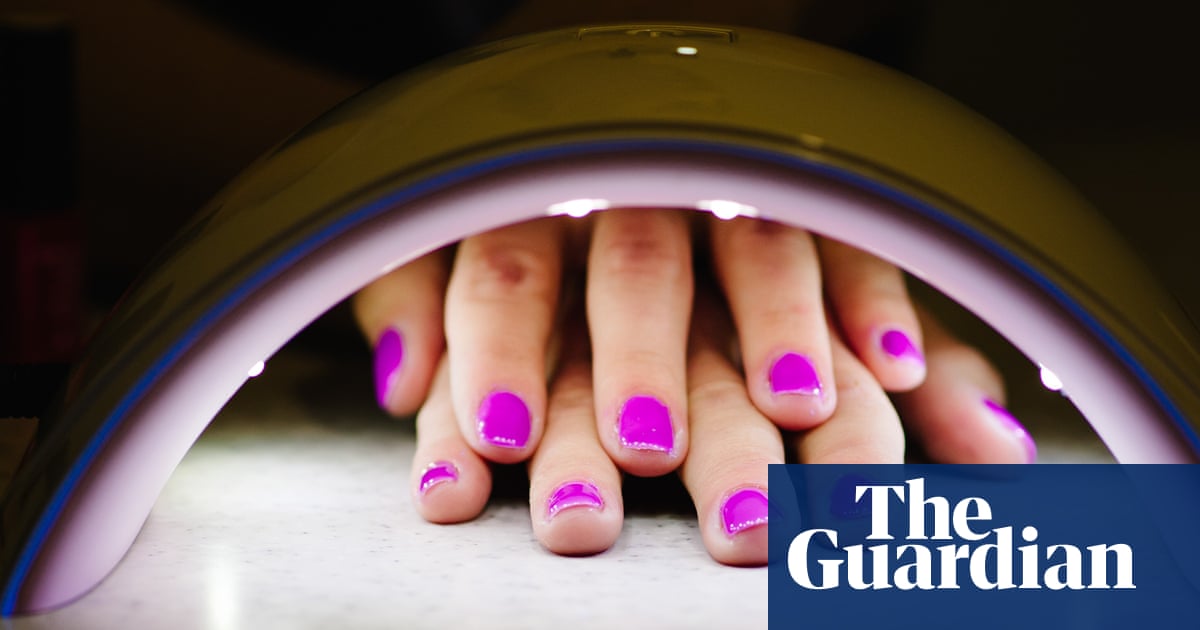Invest in the right pieces in your first house (clue – it’s not a sofa), let teens have some say and make spare rooms work harder when the kids move out … interiors experts share their tips for every age
First home
Make the bathroom your priority
It’s likely you won’t have much money after you’ve bought your first home, but if it’s a house that needs work, prioritise updating the bathroom first, says Simon Ribchester, head of design at renovation specialist Beams. “When an old bathroom with dodgy plumbing goes wrong it can be a very expensive problem to fix. And however stressful and dusty the rest of the house gets, having a clean place you can retreat to for a glass of wine in the bath is invaluable,” he says.
Use the right white
Resist the urge to paint all the walls brilliant white the moment you move in, says interior designer Rebecca Constable. “It might seem like a blank slate, but it can make the house feel sterile and cold,” she says. “A neutral, like Farrow and Ball’s Wimborne White, or a colour-matched version of it, will look softer and calmer.”
Don’t overly commit to trends …
A classic rookie mistake is to dive headfirst into a trend, says Ribchester, who suggests approaching hard fixtures and finishes which are expensive to change (tiles, taps, flooring) the same way you would if you were getting a tattoo: if it feels like a trend you’re likely to get bored with, don’t do it. Instead, have fun with the things you can switch out more easily, such as soft furnishings, art and even paint (though bear in mind darker colours are more costly to cover).
… or to shops
Another common mistake is to buy everything at once from the same few stores – a well-designed room is all about the juxtaposition of pieces that reflect who you are, says Ribchester. Bringing something old which might not perfectly “go”– a university poster perhaps, or a chair from your childhood bedroom, say – can stop it looking flat.
Spend on things you can move
“Built-in joinery is brilliant if you have a tiny space, but it’s also expensive and you can’t take it with you when you move,” says Constable. A well-chosen antique cupboard or chest of drawers is likely to be much cheaper and, unlike a piece of flatpack furniture, was built to last and designed to be repaired so it will happily move with you – try eBay, Facebook Marketplace or The Saleroom.
Beware the expensive sofa
Don’t blow your first-home budget on a fancy sofa, Constable adds. “It will inevitably be the wrong size or shape for your next home.” Buy the sofa secondhand and invest instead in a nice armchair – “which will also be cheaper to re-cover down the line.”
Go big on rugs
If you don’t have the budget to change the floors, buy the most generously sized rug you can, says Constable – you want your furniture to sit on it, not around it.
Don’t rush
Above all, don’t rush, Gemma Luteijn, interior designer at Project London, says: “The best homes evolve slowly and look organically curated, rather than the product of quick, slapdash decisions.”
First baby
Decorate your room first
With a baby on the way, your social media feed is probably flooded with shots of pastel nursery makeovers. “The most common mistake people make is to decorate for the baby,” says Constable, “but they’re a baby for a brief period of time.” Most babies spend the first six months of their life in their parents’ bedroom, says Ribchester, so focus on that first. Add softness and comfort with the nicest bedding you can afford, a padded fabric headboard and a lovely pair of matching lamps which can be dimmed easily for night feeds (a touch-base one with varying degrees of brightness can be easier than fumbling around for a switch). If space allows, a bedside chest of drawers is often more practical than a bedside table, with plenty of surface for baby paraphernalia. “Also, buy a nice, lidded basket you can throw dirty clothes and muslins into,” he adds.
Choose wallpaper wisely
When you are decorating the baby’s room, do it with an older child in mind, says Constable: “Those large motif wallpapers are fun, but they age really quickly. I’d go for a really small pattern instead.” Sandberg has a range of neutral ginghams and fine stripes which should grow with your child. A fabric canopy over the bed is a less permanent way to add some fun – attached with a single ceiling hook, it can be removed when your child is too old for it: “We recently added a circus-inspired one to a child’s bed,” says Gemma Holsgrove, design director at Sims Hilditch.
Avoid dedicated kids’ furniture
“Instead of a short-lived changing table, consider an antique chest of drawers with a removable changing mat on top,” says Luteijn (get one in a pattern which works with the colours of the room), and instead of buying a kids’ wardrobe, adapt a standard-size one with a second hanging rail which you can remove when your child gets bigger, says Constable. And don’t bother with a toddler bed, she adds, just go for a standard single with a removable safety side. “Upholster the headboard in a lovely dark plain weave fabric” so it’s practical and hard-wearing, but also soft enough to lean against for bedtime stories.
Teenagers
Let them have input – up to a point
“Privacy and autonomy are both really important for teenagers, so let them have input in the decoration of their room,” says Ribchester. But also bear in mind teenagers can be fickle, so if in doubt about their long-term commitment to jet-black walls, stick to a neutral base, adds Constable: “Introduce a shade they love in the fabric of their headboard or cushions, then give them creative space with a cork wall or large fabric pinboard.” Zara Cowen, interior designer at Huxley Home, says a bespoke neon light costs less than you’d imagine, and can be a cool way to display their name or a favourite affirmation: “They often look good in the dead space of wall above the door.” Removable peel and stick decals can be a less permanent alternative to wallpaper.
Give their clothes space to breathe
Cowen also recommends Hafele wire metal drawers, which can be fitted into wardrobes: “It’s good to get air circulating around that T-shirt that didn’t make it into the wash, and basket drawers are easier to find things in than shelves.”
Mix up sheets
To make bedding fun, Cowen suggests Piglet in Bed’s mix-and-match bundles, which can be switched around seasonally to keep the room looking fresh.
Futureproof electrics
If you’re doing any rewiring, says Luteijn, plan your electrics to accommodate a double bed (even if your child currently sleeps in a single) to make it easy to create a guest room when they eventually move out.
Don’t knock through completely
If you’re renovating downstairs, it’s best to think about a “broken” layout, rather than open-plan, says Constable: “If you live in a typical Victorian house with a double living room, plan for pocket doors between them to maintain separate rooms when your children are older.”
Give them a clear study area …
Though teenagers aren’t famously neat, a properly lit desk area that doesn’t have too much clutter in their eyeline is important for focus, says home organisation expert Vicky Silverthorn, so find something with plenty of drawers underneath rather than shelves above.
… plus another one downstairs
“The workplace body doubling theory suggests we’re more productive when we work with others present, and it can apply to teenagers, too,” says Silverthorn. Try to carve out a second study space off the living area, even if it’s in a gap under stairs in the hallway, where they can work but feel connected to the family; a classic secondhand drop-leaf desk is a good option to hide clutter when it’s not in use.
Create a no-phone zone
Given the never-ending battle with teenagers over screens, try keeping one room or zone in the house totally phone-free, says Cowen – a little reading nook with bookshelves, or a table where you can play board games. A dedicated phone-charging drawer or shelf in the kitchen will help encourage this. You can even buy decorative “unplugged” boxes for phones to go into – if you find the designs too schmaltzy, create your own with a pretty marbled-paper box.
Empty-nesters
Put comfort first
You’re likely to be at home more than ever at this stage, so invest just as much in how things feel as how they look, says Ribchester. For upholstery, prioritise plushness and softness, he says, “the kind of fabric you might have put off for years because it’s not spill-proof”.
Furnish for the future
Think long-term if you’re getting a new sofa: “A feather-filled sofa cushion is heavy and could be increasingly difficult to lift and plump as you get older. A foam filling with a feather wrap is more practical,” says Constable. Something with a bit more “spring” than ‘“sink” will be easier to get in and out of in years to come. Likewise, for bathrooms, “a tiled bench within a shower or a wider tiled ledge around a bath adds practicality in a way that doesn’t feel overly adapted,” says Grazzie Wilson, head of creative at tile brand Ca’ Pietra. “Opt for tiles with an R10 or R11 rating on the floor so they’re not too slippery,” she says. If you can afford to add underfloor heating in the bathroom, it will save cold winter mornings and dry slip-hazard puddles quickly, adds Cowen.
Design to save your back
In the kitchen, Cowen recommends an eye-level oven so you don’t have to bend down; the Neff Slide and Hide is a good option if space is tight as the door retracts under it. Maxing out on kitchen drawers is a good way to avoid bending and stretching to root around for things buried in cupboards.
Don’t completely erase the past
It can be tempting to do a complete refresh when the kids have flown, but it’s also nice to have reminders of family history. Ribchester says one client renovating her bathroom asked builders to leave a Stüssy sticker her son had stuck to the window frame decades earlier.
Create a memory wall
Thinking of downsizing? “Floor space is the most valuable real estate, so make use of the walls,” advises Silverthorn. Photo frames you have no space to display on surfaces can be turned into a family gallery wall, which looks especially good in transitional areas like hallways or landings. For other things you can’t hang on to, Silverthorn recommends Vintage Cash Cow, which will sell your belongings after getting them valued by experts.
Be crafty with spare-bedroom space …
If you’re not downsizing, make your spare bedrooms work harder by going multipurpose: have a craft room with a sofabed in it, or a dressing room with a hidden pull-down Murphy bed, like this clever design by interiors influencer Jen Rothbury. Dorm rooms are also becoming increasingly popular for clients with grownup children as a fun way to accommodate family: “We recently created one using shop-bought bunk beds which we clad in MDF and painted with a fun cloud pattern so they looked bespoke,” says Ribchester. Otherwise, Cowen recommends Ikea’s stackable single beds as a smart way to accommodate the grandkids.
… and upgrade your own
For your own bedroom, consider little luxuries like a tea-and-coffee station tucked into a wardrobe so you can have a hot drink in the morning without going downstairs, says Cowen. Sleep quality can decrease with age, so add blackout blinds if you don’t already have them, and – if your mattress is as old as your marriage – invest in a zip-and-link one with separate spring units to make you less likely to disturb your partner. “One client even got me to design two identical master bedrooms,” says Cowen, “neither wanted to feel they had been turfed out in the night because the other was snoring!”

 3 weeks ago
35
3 weeks ago
35

















































